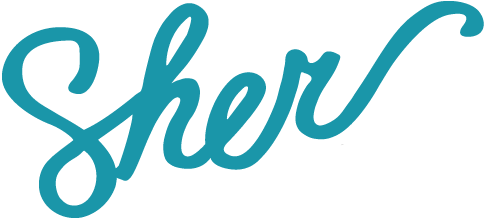Quite Contrary, 2007 by Sher Fick (encaustic on board, paintbrush)
Creating art is ultimately a healing process of self-expression, self-evaluation, and self-discovery. Art can be manifested in many ways: writing, painting, sculpting, acting, performing, teaching, and reaching out through charity. With this broad definition we realize that the mere act of breathing can be considered a form of art. In our day-to-day communications, person-to-person, parent-to-child, friend-to-friend, and down through the chain of life, we are developing ourselves, which will lead towards a becoming, of our final masterpiece and legacy, the circumference of our human existence.
"None of us really changes over time, we only become more fully what we are" (Rice, 248). Travail and adversity merely proves to our spiritual soul that we are alive, "we bleed just to know we're alive" (GooGoo Dolls). By experiencing our lives more fully, breathing deeper, feeling more joy and pain; one can begin to have the information from which to draw forth creativity. By allowing the pain and joy to have an outlet through any form of art, we facilitate healing from the pain and increase the capacity for more joy in our lives. The roller coaster can peak only as far as it plummets.
Any art form is about the self-expression of the artist in question. While the viewer might find a particular artwork to be morally offensive and degenerate (for instance, Mapplethorpe's photography of young children in seemingly sexually exploitative environments and poses), is it society's job to judge whether "right" or "wrong?" One can only speak for oneself in these matters. Such emotionally relative considerations are personal choices and society should trust individuals to decide for themselves - whether they wish to support a controversial artist with their personal funds. The pursuit of self-release and healing in the act of creating art should never be censored by any society, religion, or political forum. Only the financial support of such art is a valid concern.
By reaching a conclusion that art is a form of expression, a facilitator of communication of human emotion and concern, we see that an entire world is open for interpretation. Before judging art, you should consider from where the art is coming. An artist's statement is always helpful in this regard, however, an artist statement is not always provided. So, then, how do we judge the intent of the artist?
One way is to set up a list of assumptions which can be used to fill in the missing information from the artist. Obviously, making art is sacred to the artist or he/she would not be doing it (I'm excluding commercial/decorative art here, which is produced for the masses as a product). Also, we know that our forms of communication are reflective of our pasts. Our language, habits, beliefs, and symbols have to do with our life's journey, so by identifying these mannerisms we can begin to communicate with the artist through their artwork.
By celebrating the mere act of an artist's ability to even attempt to express themselves through the visual and audio worlds, we can reach a level of understanding towards the artist. This is not to be misconstrued as agreement with an artist's style or subject matter, but merely respect, tolerance, and acknowledgment of the artist's human right to express him/herself in the manner in which he/she chooses.
Many draw a line when the artist might involve others in their creative process. If others might be injured (physically or emotionally) through the act of creativity, then we have reached a moral atrocity. Hitler's form of art, his experimentation with human life, is morally reprehensible, few would argue that fact - it is astounding to realize he began his young adulthood attending art college - unsuccessfully, I might add. Had he reached a level of self-expression which leads to self-healing, earlier in his life, it is possible he would not have become the monster he himself created.
"Human beings casts their own shadows" (Sister Wendy), by accepting responsibility for the creation of their inspirations, by sharing with others an inner doorway into their souls, all artists (all humans) can explore and share spiritual healing and greater joy. Only by observing other artworks, and continually increasing their bank of techniques and knowlegde, can an artist draw forth additional insights which will increase their own ability of self-expression and self-healing.
A true friend is love with understanding. Art and all of its forms can be considered as friends of our soul's ultimate desire.
Works Cited:
Rice, Anne. The Vampire Lestat, quote from character Lestat, Bantham, New York, 1986.
Goo Goo Dolls, City of Angels Soundtrack, 1998.
PBS Special, Sister Wendy's History of Painting, Volume II (Renaissance Art), 1996.Self-Expression in Art
Read More

